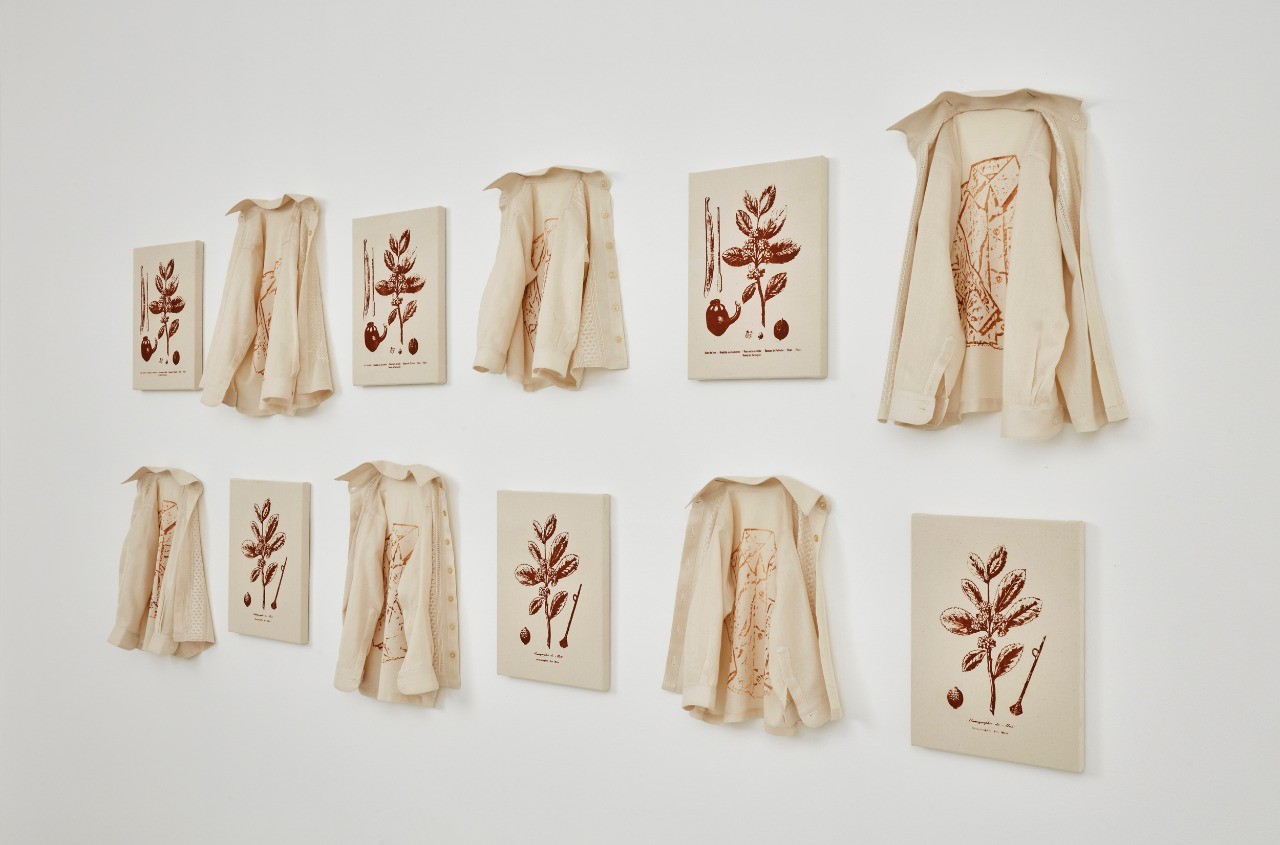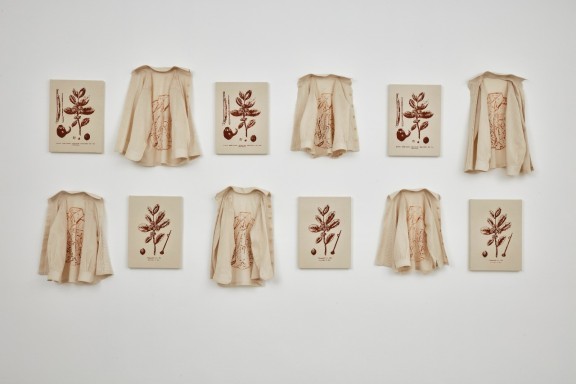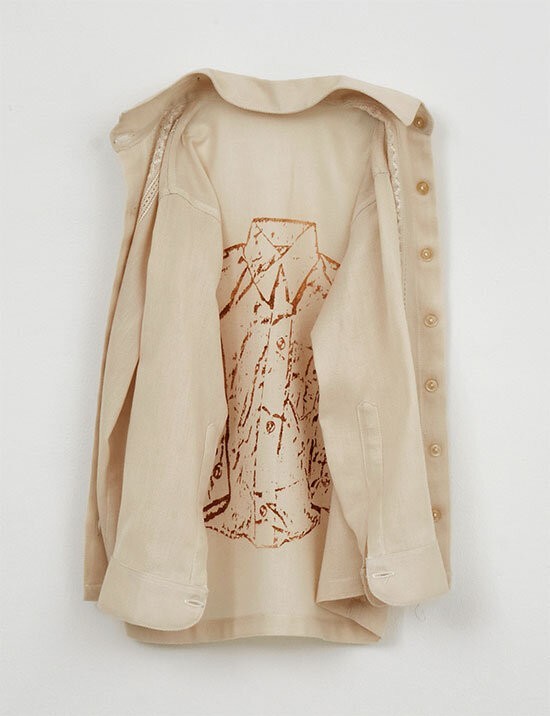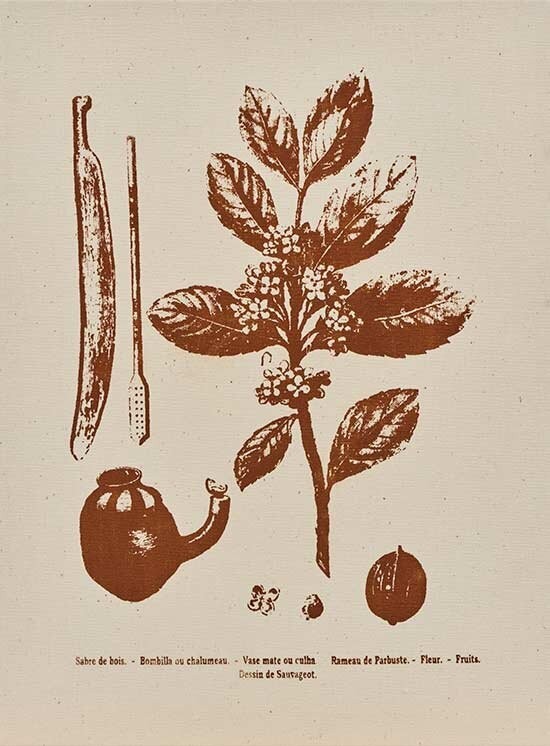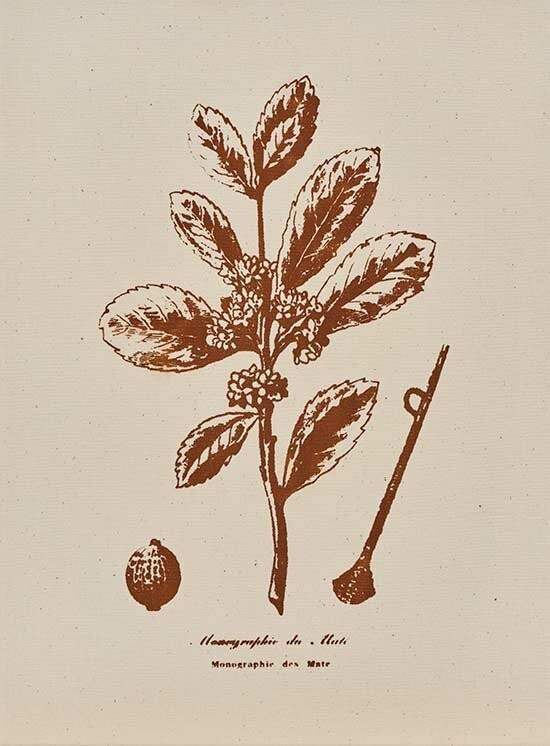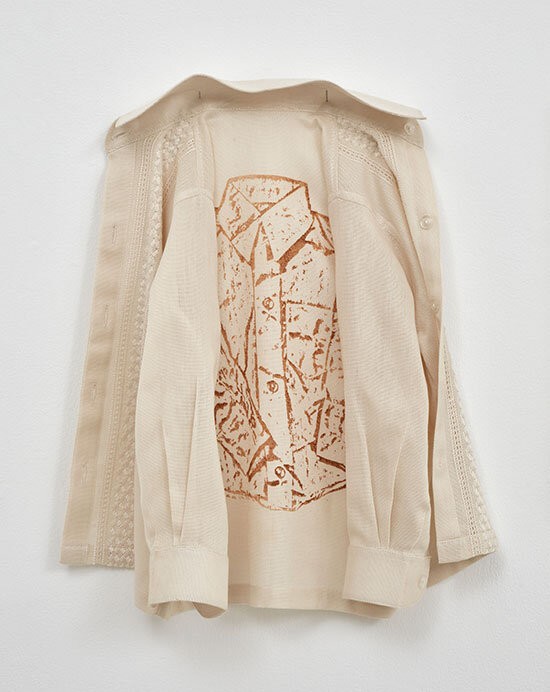Indelible
Red soil silkscreen on Ao Po'i embroidered shirts and canvas
Variable Dimensions
2020
Claudia Casarino…confronts cotton shirts with screen-printed images of yerba mate plants. The shirts are made with aopo'i, the light cotton fabric that has been part of Paraguay's textile culture since pre-colonial times. The shirts and prints are stained, marked, with red earth from Alto Paraná dissolved in water. An indelible painting. The ancient Guaraníes said that the red of that land comes from the indigenous blood spilled during the violent conquest of their territories. But that color could also come, and this is suggested by Claudia, from the color poured by the mensú, the tareferos who, in the same region, collected the yerba mate leaves under extreme exploitation conditions. Conditions typical of a slave regime causing bodily harm and, often, the death of workers.
The artist is based on a case exposed by Rafael Barret in Paraguayan pain. The mensú had no assets other than their own shirts: they took such care of them that, rather than destroying them, they sometimes preferred to expose their backs and finish tearing them, which would still be torn by the enormous load they carried. The menu shirts were worn inside out, so as to cover the chest and leave the back exposed. The garments exhibited by Claudia Casarino carry earthy, bloody traces of other shirts that seek to replace the part removed from the back. Who seek to reverse the tragedy of the condemned spine.
Art has the possibility of bringing an unfortunate event from memory to the present to face it in the future and assign it new missions; Thus, he returns to a nocturnal moment that has already occurred to imagine what could have happened or what could happen if that moment had had another sign. This dimension of possibility of art opens the space of memory to desire and keeps it available for political action and ethical commitment. This is the idea of “redemption” of the past in Benjamin that allows us to detect new powers of creation in a time that has already occurred. Casarino invokes memory seeking to twist the destiny of Paraguayan pain, to counteract the curse of yerba mate. He knows that art can return to past time and imaginatively alter its darkest figures, but he also knows that any act of historical redemption cannot avoid the indelible vestige of trauma. Even replaced on their backs with the image of other garments and even exposed to different gazes, the shirts retain the stigma or insignia of the red earth.
Ticio Escobar

